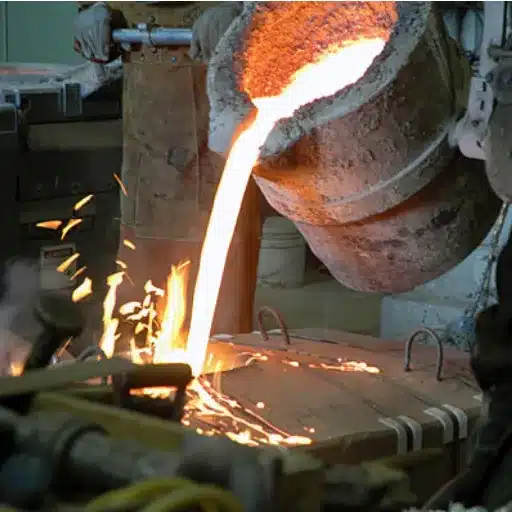Pipe fittings have importance in construction, plumbing, and industrial services because they are the key elements of the fluid or gas transport systems. Among the many materials and types available, MS (Mild Steel) and GI (Galvanized Iron) pipe fittings are two commonly used options that often cause confusion. What MS truly stands for and how it is different from its GI counterparts are questions commonly asked.
This article helps answer that by shedding light on their characteristics, applications, and advantages. Whether you are a professional or just a curious individual interested in the field, this guide will help you utilize informed information with the right knowledge. Continue reading if you want to learn more about the variations of MS and GI pipe fittings and their uses in different industries.
What Does MS Stand For in Pipe Fittings?
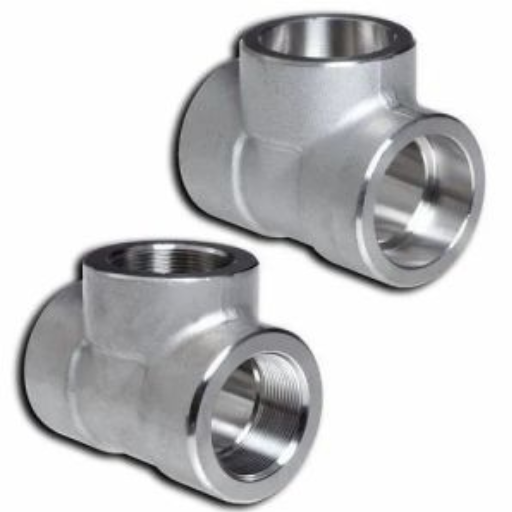
In the context of pipe fittings, MS refers to Mild Steel. This term describes a category of carbon steel with low carbon content, creating a strong, tough, and easy-to-weld material. MS pipe fittings are widely utilized in plumbing, construction, and industrial works due to their cost-effectiveness and adaptability.
MS Fittings: Definition and Basic Composition
Mild Steel (MS) fittings are products of mild steel, a type of steel with a carbon percentage between 0.05% and 0.25%. The low percentage of carbon contributes to a material’s weldability and ductility, which is critical for pipe fittings. MS fittings serve to connect pipes and control flow in a way that enables strong seals that will not leak.
MS fittings primarily consist of iron, with minor constituents such as silicon, manganese, and phosphorus. Such constituents modify the material in terms of strength and maintenance of the MS fitting’s surfaces. These products are available as elbows, tees, reducers, flanges, and couplings. Such diversity allows meeting the needs of different industrial and domestic purposes.
Like in the oil and gas industry, water supply systems, and steam systems, MS fittings are appreciated for their reasonable price and long-term durability. In addition, new manufacturing approaches have led to improved precision in producing MS fittings, better rust and corrosion-resistant coatings, and thus, service life.
Mild Steel: The Material Behind MS Pipe Fittings
Mild steel is an alloy of low carbon, which is moderately strong, flexible, and affordable, making it the best choice for pipe fittings. Its high tensile strength guarantees durability while its malleability allows it to be easily shaped and fabricated into different fittings. Furthermore, its cost-effectiveness and versatility in many industries make it a material of choice for MS pipe fittings.
Low-Carbon Steel: The Chemical Composition of MS Fittings
Mild steel or low-carbon steel is a type of alloy steel that contains carbon in the range of 0.05% to 0.25%. The properties of moderate strength combined with good ductility is appropriate for use in parts like pipe fittings, which need both toughness and flexibility. Its constituent elements also include manganese in definite quantities, which improves the hardness and wear resistance of the steel, along with some amount of phosphorus and sulfur. These alloying elements facilitate the fabrication processes by enhancing the machinability and performance of steel.
The characteristics of mild steel make it highly weldable, eliminating the chances of distortion and crack formation during fabrication. These properties make mild steel extremely advantageous in the manufacture of pipe fittings, which are subjected to both internal and external pressure and sustained temperature changes. Its versatility is further proven by its implementation in construction, plumbing, and automotive industries.
Differences Between GI and MS Pipe Fittings
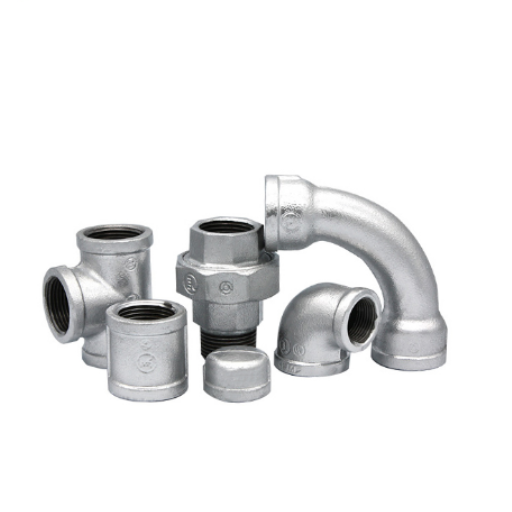
The differences between MS (Mild Steel) and cast iron pipe fittings arise from their material properties and their intended uses:
- Material and Coating:
-
-
- Iron or steel is used to fabricate GI pipe fittings, a nd the coating is done in zinc to mitigate rust and corrosion welding.
- MS pipe fittings are made of mild steel and do not have a protective zinc layer, and are much more prone to corrosion without preservation efforts such as coating or other treatment.
-
- Corrosion Resistance:
-
-
- Because of the zinc coating, GI fittings are highly resistant to corrosion, making them ideal for outside use or areas with moisture.
-
MS fittings need extra protection for corrosion resistance, such as paint or galvanization.
-
- Strength and Durability:
-
-
- MS fittings have an edge over others in strength and pressure endurance, making them appropriate for more heavy-duty work. MSI is also known to be used in severe operating conditions.
- GI fittings are weaker but are adequate for lower-pressure systems used for general purposes.
-
- Applications:
-
-
- GI fittings are structurally used in the water supply system, fencing, and in the construction of light and portable structures.
-
MS fittings find their application in heavy industries such as automotive, construction, and plumbing, which require high strength and durability.
-
Choosing the right fittings for your project will be easier after you understand the differences between them.
Galvanized Iron vs. Mild Steel: Core Distinctions
1. Corrosion Resistance
When it comes to outdoor uses or areas with high moisture, Galvanized Iron (GI) is one of the best options available as its protective zinc covering makes it highly resistant to corrosion. Industry reports suggest that galvanized coatings have the ability to prevent rust in rural areas for almost 50 years and for 20-25 years in more corrosive industrial settings. Due to the absence of a protective layer, Mild Steel (MS) is more prone to rusting. Paints and coatings can, however, be applied to increase the durability of MS.
2. Lifespan and Maintenance
Fittings made of Mild Steel (MS) would undergo complete destruction in harsh environments due to their low resistance to environmental factors. With time, MS components could become cost-ineffective as they would require constant surface treatments and maintenance to avoid disintegration. On the other hand, fittings made out of Galvanized Iron (GI) would be more cost-efficient in the long run as they have a significantly longer lifespan.
3. Weight and Structural Applications
Compared to Galvanized Iron, Mild Steel is capable of bearing heavier loads and has far more consistent tensile strength. It is used in the construction of heavy-duty frameworks, which include bridges, buildings, and vehicles. Because of its lighter weight, GI is better suited for roofing sheets, small-scale piping, and other light structural designs where weight is crucial.
4. Environmental Considerations
Galvanized iron poses environmental risks such as soil contamination due to zinc runoff as a byproduct of the zinc coating used in its production. On the other hand, if recycled properly, Mild Steel is more eco-friendly as it is 100% recyclable. Its structural integrity allows it to be reused in multiple frameworks, which gives it a versatile edge.
As stated earlier, it is important to consider the advantages and disadvantages of the materials in order to make the right decision for a particular use-case application that takes into account the environment, cost, and longevity.
Corrosion Resistance: How GI and MS Fittings Compare
GI (Galvanized Iron) and MS (Mild Steel) Fittings have different resistance to corrosion because of their properties and coatings. GI fittings are protected from rust and corrosion by a layer of zinc that is added to the surface. Moreover, zinc oxidizes with oxygen and moisture in the environment to create zinc oxide, a protective barrier that will shield the iron base. Whenever these fittings are exposed to the outdoors, places with stagnant water, or heating and cooling, their zinc coating will protect them from these issues.
MS fittings are made of low-carbon steel and lack the zinc coating that acts as a barrier against rust corrosion. Without modification, MS fittings are not as corrosion resistant as lesser GI fittings. By enhancing the surface with protective treatments like paint, powder coating, or galvanization, the fittings attain some corrosion resistance. Protective measures can also be used in order to prevent falling behind on filing. Poorly defended MS fittings are prone to the more basic forms of rust in moist or corrosive environments.
According to industry research, the life expectancy of GI fittings appears to be longer in demanding conditions owing to their better durability against rust, and GI fittings tend to outperform their simpler counterparts. Consider, for instance, a typically galvanized coating: it can provide protection in rural surroundings for 20–50 years and in industrial ones for 10–20 years, depending on exposure and maintenance routines. In comparison, mild steel untreated surfaces may suffer significant corrosion within mere months under comparable conditions.
As with everything, the choice between the two – GI and MS – should consider their adjustable resistance to corrosion on the environmental conditions, maintenance level, and planned service life of the application in question. Undoubtedly, GI fittings come with rust protection right away, but MS fittings can be designed to withstand the elements with extra cover treatments; they just need to be assembled correctly.
Zinc Coating: The Protection That Makes GI Different From MS
Zinc coating, a characteristic that differentiates GI (galvanized iron) from MS (mild steel), is most often applied with a galvanization process. The layer of zinc is meant to protect the underlying iron or steel from the environment by corrosion. One important advantage of Zinc coating is its ability to perform sacrificial protection. The Zinc coating protects steel from rusting beneath it when the coating is scratched, damaged, or moisture and oxygen are present.
Striking a specific outer din appearance with zinc coatings will have to be done through measuring coating durability and thickness. Standard galvanization processes yield coatings ranging from 20 µm to 60 µm, which translates to varying applications and material grades. As an example, outdoor structures exposed to harsh weather will need thicker zinc coatings if they are to have lifespans of over 50 years for rural environments where severe corrosion can be resisted.
Data from comparative research indicates that structural components with GI coatings survive four to five times longer than unprotected mild steel in similar conditions. This durability is especially advantageous in construction, agriculture, and marine engineering, where materials face continuous moisture exposure and atmospheric changes. Furthermore, zinc coating is environmentally friendly due to the recyclability of zinc.
Zinc-coated GI is the preferred material for applications requiring maximum service life due to its uniform and strong characteristics. In contrast, untreated mild steel fails to provide these advantages unless augmented with protective coverings such as paint, powder coating, or galvanization, which adds to the expense and maintenance burden. Hence, the ability of zinc coating augments the preference for GI across a wide range of industrial applications.
Applications and Uses of MS Pipe Fittings
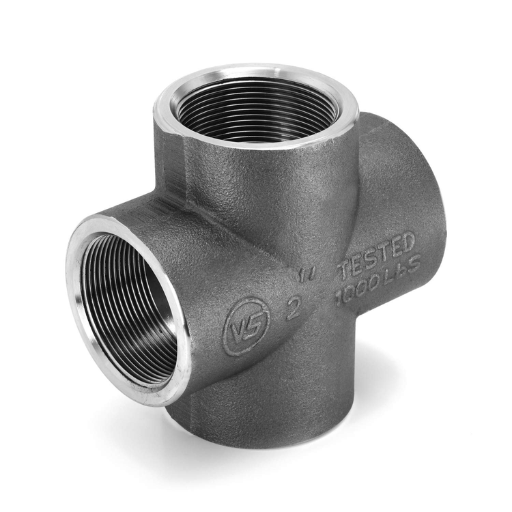
Mild Steel (MS) pipe fittings are very popular in different industries because of their strength, low price, and wide range of uses. Below is a detailed list of applications and uses:
- Plumbing Systems
-
-
- Applied in home, business, and industrial plumbing for the purposes of water supply and waste removal.
- Necessary for the joining of pipes in both the hot and cold water systems.
-
- Irrigation and Agricultural Applications
-
-
- Employed in irrigation systems for the effective distribution of water resources to pastoral and agricultural lands.
- Applicable in sprinkler and drip systems as a result of their durability and corrosion resistance when properly treated.
-
- Industrial Piping Systems
-
-
- Central to the movement of liquids, gases, and chemicals.
-
Used in oil refineries, power plants, and chemical plants because of their strength.
-
- Structural Applications
-
-
- Applied in scaffolds and supports as a structural part in buildings and infrastructure construction projects.
- General-purpose scaffolding and supporting frameworks for buildings, bridges, and other civil engineering marvels.
-
- HVAC Systems
-
-
- Moveable in HVAC systems for the purpose of transporting air, gas, or hot/cold liquids.
-
- Firefighting Systems
-
-
-
Due to their high dependability and reliable handling of high pressure, MS pipe fittings are widely used in sprinkler and fire suppression systems.
-
-
- Automotive and Machinery Industries
-
-
- Assist in producing parts for automotive appliances like exhausts and hydraulically connected pipes.
- Useful in the subsystems of heavy machinery for moving fluids and structural components.
-
- Gas Pipelines
-
-
- Preferred materials for the transportation of natural gas, LPG, or other gases in commercial and industrial facilities.
-
- Wastewater and Sewage Systems
-
-
- Used in municipal wastewater treatment plants and sewage system works because of their resistance in harsh environments.
-
- Furniture and Decor
-
-
-
MS pipe fittings also make it possible to manufacture modern and stylish furniture and decorative elements.
-
-
Their flexibility and adaptability make MS pipe fittings a number one choice in industries that depend on dependable and economical piping systems.
Industrial Applications: Where MS Fittings Excel
Due to their flexibility, durability, cost-effectiveness, and modifiable nature, mild steel (MS) pipe fittings are now critical in many industrial applications. Below are specific references to businesses where MS fittings serve an essential purpose:
- Construction Industry
-
-
- MS pipe fittings are widely employed in water supply systems for construction scaffolding plans, as well as in structural frameworks. Their affordability makes them favorable for large-scale construction projects, and at the same time ensures long-lasting support structures. Data from market intelligence reveals that the world market of mild steel pipes and fittings will expand at the rate of 4.3% CAGR between 2023 and 2030, primarily because of the construction and infrastructure activities.
-
- Oil and Gas Sector
-
-
- This segment relies heavily on MS pipe fittings because oil, natural gas, and other petroleum products are moved through pipelines using them. They are very suitable for all three stages–upstream, midstream, and downstream–because of the high pressure and varying temperatures that they can withstand. Studies suggest that maintenance cost savings and lifespan extension of the pipes in these conditions are greatly aided by corrosion-resistant mild steel.
-
- Automotive Manufacturing
-
-
- Automobile systems employ MS fittings for the exhaust system and chassis applications towards the back of their vehicles. Chassis components require a great deal of strength along with a nice amount of malleability. There is now less mild steel in automobiles because of improvements in the processing of steel. The steel perks now offered are lighter with no performance degradation, which helps to improve fuel efficiency and emissions reduction. Reports say more than 60% of the steel used in making cars is derived from the automobile industry.
-
- Agriculture and Irrigation
-
-
-
The versatility and strength of MS pipe fittings make their use worthwhile for farmers and agribusinesses, and in the implements and equipment utilized within irrigation systems. They facilitate the modern drip and sprinkler systems that further enhance water-use efficiency and crop productivity. Some recent statistics mark a notable uptake of international usage of mild steel fittings with regard to sustainable farming initiatives.
-
-
These examples highlight the many uses of MS fittings in servicing the infrastructure, energy, transportation, and sustainable agricultural sectors, making it an integral material in today’s industrial world.
Structural and Mechanical Projects Requiring MS Fittings
Affordable, versatile, and durable, mild steel fittings are integral to numerous structural and mechanical projects. Considered the best option for frameworks, machinery, piping systems, and even large-scale architectural projects, mild steel’s remarkable tensile strength and malleability make it a go-to material. For example, the construction and automotive industries have spurred growth for the global mild steel market, with reports stating the construction sector independently makes up around 52% of the worldwide demand for mild steel fittings.
Mild steel fittings have become fundamental in sustaining robust pipelines, hydraulic systems, and boilers, pervasive in the energy sector and manufacturing plants. These fittings are known to retain dependable performance and longevity in demanding environments as a result of their ability to withstand extreme pressure and temperature changes. Moreover, MS fittings now enjoy the endurance afforded by outdoor and high-humidity settings due to advances in corrosion-resistant coating technologies, like galvanization.
The construction of infrastructure is made easier with the widespread availability of mild steel, one of the most extensively produced materials globally. Its widespread adaptability solidifies its status as a fundamental component for structural and mechanical applications.
Heavy-Duty Applications: Why MS Pipes Are Used
Mild steel (MS) pipes are vital in construction and lifting machinery for their reasonable cost and high durability. These pipes can endure severe pressures, making them apt for use in construction, manufacturing, and the oil and gas industries. The MS pipes are applied in scaffolding and framework structures where load-bearing support is crucial.
Moreover, MS pipes are widely applied across fluid transportation systems, which include water, steam, and gas pipelines. These pipes can withstand harsh temperatures and extreme pressure shifts. Research states that pipes made from mild steel can operate efficiently under 25 bars and still be structurally sound. Modern technological improvements, such as zinc coating, provide MS pipes with an added protection against rust, environmental deterioration, and sensitive conditions, thus prolonging their service life.
There is an increase in the adoption of mild steel pipes worldwide as industries shift towards more economically-friendly and environmentally sustainable materials. The recent industrial reports have provided an expectation that the global market for mild steel pipes will experience a compound annual growth rate (CAGR) of nearly 4–5% over the coming ten years. This is due to the increasing investment in infrastructure development and the need for high-strength materials that sustain large-scale operations. Their flexibility in customization, like changes in diameter and thickness, helps to fortify their position in high-demand applications tasks.
Manufacturing Process of MS Pipe Fittings
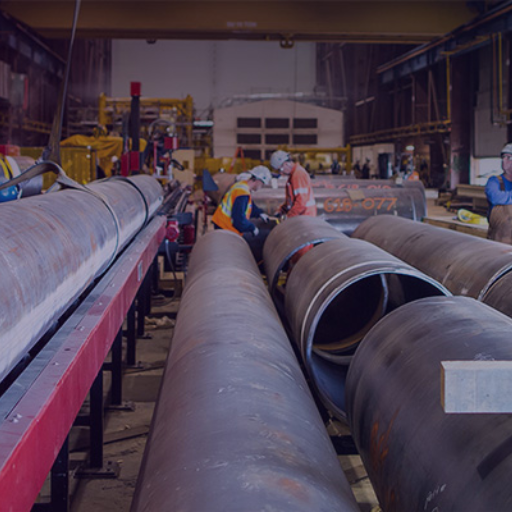
How Mild Steel Pipe Fittings Are Manufactured
Mild steel pipe fittings production is done through a rigorous and precise process when it comes to machine operations, so that the pipe fittings will be of high quality and durable. Each step comes with a table of data:
- Raw Material Selection: The base material used is refined as mild steel. It is known that this steel possesses a carbon content of 0.05% to 0.25%, and thus its toughness and ductility are in balance. Using superior raw materials will contribute to achieving the required standards for product performance.
- Cutting and Shaping: The raw steel goes through further processes where it is cut using laser or plasma cutting machines to form the required dimensions. Meeting the manufacturing tolerances is critical, and in this case, it is within the range of ±0.1 mm.
- Forging: For forging the steel, a temperature of 1,100°C and 1,200°C needs to be maintained. It is during these very high temperatures that desired shapes such as elbows, tees, or reducers are formed. The controlled forging process ensures a better grain structure for improved tensile strength and pressure resistance, along with the needed forging.
- Heat Treatment: The fittings are then subjected to a number of treatments, which include annealing, normalizing, or quenching. Such timely procedures enhance the mechanical properties to be more optimal. Research indicates that with the right conditions, mild steel fittings undergo heat treatment to enable them to have a tensile strength average of 430 to 470 MPa.
- Machining: Modern CNC devices are employed to achieve exact precision in the fitting component machining. Customized design requirements have been met by performing threading, drilling, and beveling. With CNC machining, fittings and pipes are guaranteed to mate seamlessly.
- Surface Treatment: The lifespan of the fittings is increased by the application of anti-corrosive measures such as galvanizing (zinc coating) or epoxy coating. Research suggests that galvanized pipe fittings gain up to thirty years of corrosion resistance in harsh environments.
- Inspection and Testing: Compliance with stated quality control standards like ASTM A234 and BS EN 10241 is observed intensely. Checking pressure, non-destructive testing (NDT), and measuring certain dimensions against international standards are some of the tests conducted. It has been reported that high-quality fittings endure operational pressure of 600 PSI.
- Packaging and Delivery: Final products undergo packing with protective materials such as padded boxes or reinforced crates. Such materials reduce any possibility of physical harm during storage or transportation. Delivery to customers is punctual, thanks to streamlined logistical processes, all while upholding product security.
Leveraging precise international standards allows mild steel pipe fittings to be efficiently produced and used in applications such as plumbing, oil and gas pipelines, and even structural projects without losing durability, cost-effectiveness, or versatility.
Welding and Forming Techniques for MS Fittings
Advanced forming and welding techniques must be applied accurately and integrally when manufacturing mild steel (MS) fittings. The MS pipes and components are welded together using MIG (Metal Inert Gas), TIG (Tungsten Inert Gas) welding, as well as arc welding. For faster production, MIG welding is the most ideal compared to TIG welding. TIG welding is common where there is a need for high-quality welds that need to be well-structured, oil and gas industries,s for instance.
Design and shape alteration to MS fittings is achieved by pipe bending and die forming techniques. One example is the capacity of hydraulic pipe bending machines to bend pipes to within a 1-degree tolerance. This ensures the MS fittings are in accordance with complex layouts or industrial standards. Moreover, the processes of hot rolling, as well as cold rolling, enhance the quality of the steel with regard to its thickness and surface finish, making it more uniform.
According to data from industrial applications, with proper welding and formation, MS fittings can endure internal pressures of around 400 psi, making them suitable for moderate environments pertaining to structural and piping systems of medium duty. The combination of these techniques, along with stringent QC standards such as X-ray inspection of weld joints, guarantees dependability and longevity for crucial systems in construction and manufacturing, or energy pipelines.
Durability and Performance of MS Fittings
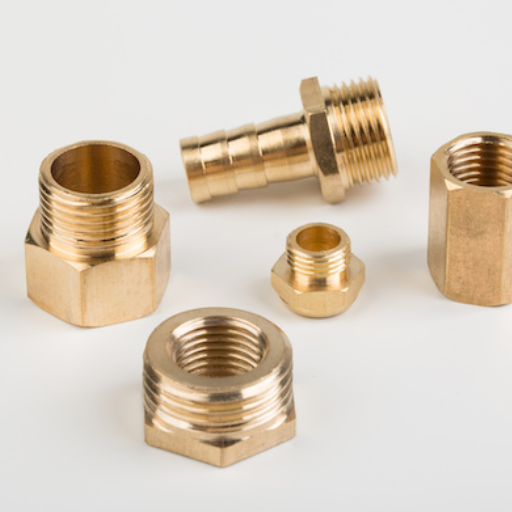
MS fittings are trusted and recognized for their longstanding durability and accurate performance in various applications. They can withstand moderate internal pressures and resist wear over time, making them suitable for structural and piping systems. The strict quality standards, like weld checks, MS fittings maintenance, ensure enduring performance and safety in harsh conditions.
Strength and Mechanical Properties of Mild Steel Fittings
Mild steel fittings have some of the most suitable mechanical properties for construction, manufacturing, and infrastructure, which makes these sectors their largest consumers. Mild steel has a typical tensile strength between 400–550 MPa and therefore, it is strong enough to endure considerable stress, yet ductile enough to bend without breaking. Further, its yield strength, which is typically 250 MPa, is adequate to prevent deformation while under load.
Mild steels’ most unique attribute is the high toughness, which prevents crack propagation leading to failure due to dynamic loading or impact. However, the most important attribute of mild steel fittings is that they are highly machinable, which means that cutting, welding, and forging can be done at a low cost. Hence, mild steel can easily be processed into pipelines, frames, and support structures because the carbon percentage is only between 0.05% and 0.25%, making it malleable.
To improve the mild steel’s service life in harsh or wet conditions, these fittings are usually galvanized or coated to improve resistance to oxidation. These factors, combined with low cos,t make mild steel convenient and useful for many industries.
Rust and Corrosion Concerns with MS Pipe Fittings
As with any metal, pipes made of mild steel (MS) are susceptible to damage from rust and milling, ultrahigh temperatures, extreme corrosion, salt, and certain chemicals. This is particularly true in areas exposed to moisture and humidity. The composition of mild steel makes it very susceptible to rusting a leading to failure of the MS pipes if not monitored properly.
To mitigate these problems, people use protective measures such as customs covers and galvanization. In industry data, galvanized mild steel provides a lifespan boost of 50% to the MS piping system when applied in the appropriate surroundings. Epoxy and other advanced powder-based paints can sometimes offer increased protection against an environment that is aggressive towards marine environments.
Scarifying anodes are revolutionary pieces of machinery that help combat excessive erosion and aid in eliminating oxidative activities. Another monthly or seasonal measure to complete is the coating of the pipes with a protective layer. Implementing these minor changes allows the MS pipes to get the majority of their required work done without worrying about faults.
Lifespan of MS Fittings in Various Environments
The lifespan of MS fittings in specific environments depends primarily on the degree to which they are exposed to moisture, chemicals, and temperature changes. For instance, in dry and controlled environments, they can last for decades with little to no problems. However, in more severe environments like marine or industrial, corrosion can greatly impede their lifespan unless protective coatings or routine maintenance are utilized. Having the ability to prevent corrosion enables me to guarantee MS fittings’ durability and longevity across numerous applications.
Common Types of MS Pipe Fittings Available
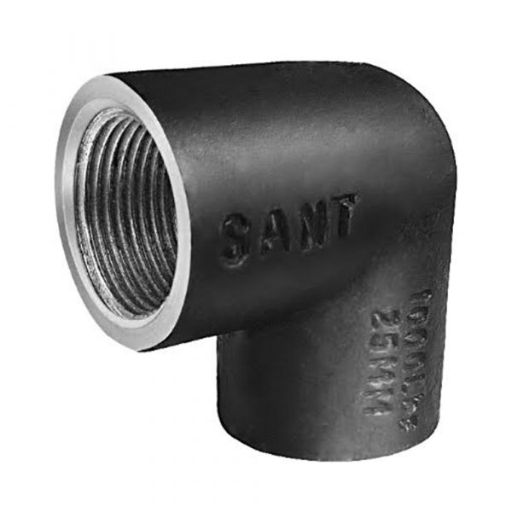
- Elbows – Used for Flow direction alteration in a piping system. They are generally made in 45-degree & 90-degree angles.
- Tees – Permit divergence into three directions. Frequently used to merge or divide the stream of fluid.
- Reducers – Serve to join pipes or other fittings of different sizes. The size of the flow may increase or decrease.
- Couplings – Enables the joining of two sections of a pipeline.
- Caps – Stop the flow of liquid or gas from piping at the end of a notice cap.
- Flanges -Spacer secured bolts which allow connection of pipes, bends, valves, and other parts.
- Unions – Coupling has evolved into a form of fittings that serve like couplings but enable easy dismounting of pipes, which is simpler than the conventional way.
These fittings are critical in multiple fields and tasks as they increase the strength and flexibility of the piping systems.
MS Pipe Elbows, Tees, and Connectors
Mild Steel (MS) pipe elbows, tees, and connectors are crucial parts of pthe pipe system as they provide mechanical strength and support for withstanding high pressure in many applications.
MS Pipe Elbows are used to change the flow direction of liquid within piping systems. These elbows come in common angles of 45° and 90°. To ensure efficiency in piping systems for households, industries,s and commercial establishments, elbows must reduce pressure loss and aid in smooth flow transitions. A good example is the 90° elbows, which are utilized in plumbing systems to change the direction of the water flow around corners.
MS Pipe Tees split or combine flow for fluids or gas and are T-shaped fittings. They are produced in Equal and Reducing types. These pipe tees are produced for use in branched connections. Equal tees have the same diameter of the pipe at all outlets, whereas reducing tees can connect pipes regardless of size and shape.
MS Pipe Connectors, which include couplings and adapters, are used to join pipes and change their ends. The fittings provide capability for elongating a pipeline system, damapaline for customizing an entire pipeline diagram, or disconnecting it in case of damage. Connectors, with their adaptable features, have become paramount to sectors such as oil and gas, construction, and waterworks.
The global construction business, along with infrastructure development, plus growing improvements in manufacturing, will fact the most significant drivers of the market. The preference is driven by the correlation cost and value, corrosion resistance, and high-pressure MS fittings have been proven to be exceptionally reliable and effective for many forms of piping systems.
Specialized MS Fittings for Specific Project Requirements
MS (Mild Steel) fittings are crafted to suit very specific needs across different projects, adapting to unique industry requirements, standards, and operational demands. These fittings are designed with machine-grade accuracy and tailored configurations to ensure multi-dimensional and optimal synergetic advantages in system performance. Enhanced tensile strength, specialized protective coatings for corrosion resistance, and precise safety-critical dimensions are some example attributes that may be required by project-specific mandates.
Recent analyses have monitored the spending patterns of the users of the service worldwide and documented changes alongside increasing infrastructure and manufacturing projects. Furthermore, other industries, including parts of the water supply system, transportation pipelines, and even chemical processing plants, are increasing their focus on further integrating MS fittings because of their durability, adaptability, and rigid environment, and government regulations. Specialized MS fittings are tailored to the needs of advanced testing and modern technologies incorporated into industrial and construction projects, blurring the line between reliability and robustness.
Reference Sources
- Design, Construction, and Testing of a Fluid Head Loss Measuring Apparatus3:
- Key Findings: This study focused on measuring fluid frictional head losses in pipe systems, including fittings like elbows, tees, and valves. It highlighted that head loss increases with discharge and that the head loss in sudden enlargements is greater than in sudden contractions for the same conditions. The friction factor’s variation with Reynolds number was also analyzed, showing trends consistent with established experimental data.
- Methodology: The researchers designed and constructed an apparatus using GI pipes and fittings to measure head losses. They used the Darcy-Weisbach equation to calculate frictional losses and compared the results with standard values.
- Relevance: The study provides insights into the behavior of GI pipes and fittings under different flow conditions, which can be contrasted with MS pipe performance.
- Stability, Rheology, and Flow in Pipes and Fittings2:
- Key Findings: This research explored the flow characteristics of non-Newtonian fluids in pipes and fittings, focusing on energy losses and flow stability. While not specific to MS or GI pipes, it provides a broader understanding of how material and design influence flow dynamics.
- Methodology: The study used experimental setups to analyze flow behavior in various pipe configurations, including bends and valves.
Frequently Asked Questions (FAQs)
Q: What does MS stand for in MS pipe fittings?
A: MS stands for Mild Steel in pipe fittings. Mild steel is essentially low-carbon steel, containing less than 0.25% carbon content. This gives MS fittings excellent mechanical properties such as malleability and good weldability while maintaining strength, making them suitable for various industries and applications demanding strength and durability.
Q: How does MS pipe differ from GI pipe in terms of corrosion resistance?
A: The main difference is in their corrosion resistance. GI (galvanized iron) pipe has a protective zinc layer applied through galvanization to prevent corrosion, making it highly resistant to rust and ideal for water supply systems. Unlike GI fittings, MS pipe fittings don’t have this zinc coating, making them more susceptible to corrosion, especially in acidic conditions or when exposed to moisture without proper treatment.
Q: When would you choose MS pipe over galvanized pipe?
A: You would choose MS pipe over galvanized pipe when cost efficiency is a priority, when the pipes will be painted or otherwise protected, for applications where corrosion isn’t a major concern (like indoor dry environments), or for applications demanding strength and flexibility. MS pipes are also preferred when welding is required, as they offer good weldability compared to galvanized pipes where welding can damage the zinc protective layer.
Q: Are MS pipe fittings suitable for water supply systems?
A: MS pipe fittings are generally not the ideal choice for water supply systems without additional treatment. Because they lack the inherent corrosion resistance of GI fittings, MS pipes used in plumbing or water supply must be properly coated or lined to protect them from corrosion. For most residential and commercial water supply applications worldwide, GI or other corrosion-resistant pipe types are preferred to ensure longevity and water quality.
Q: What are the main advantages of MS pipe fittings?
A: The main advantages of MS pipe fittings include their cost-effectiveness (they’re typically more economical than GI fittings), excellent strength-to-weight ratio making them relatively lightweight yet durable, superior weldability, making them easier to modify and install, flexibility in manufacturing allowing for various shapes and configurations, and their suitability for high-pressure applications when properly designed. They’re widely used in structural applications, fire protection systems, and industrial pipeline networks.
Q: How can I identify whether a fitting is MS or GI?
A: You can identify whether a fitting is MS or GI by looking at several characteristics: GI fittings have a distinctive silver-gray, somewhat spangly appearance due to the zinc coating, while MS fittings typically have a dull grayish appearance unless painted; GI fittings often feel slightly rougher to touch due to the zinc layer; when scratched, GI fittings reveal the zinc coating over the base metal, while MS shows consistent material throughout; GI fittings are slightly heavier due to the added zinc layer; and MS fittings may show rust formation if left exposed, while high-quality GI fittings resist rusting.
Q: What industries commonly use MS pipe fittings?
A: MS pipe fittings are widely used across various industries including construction (for structural support and non-potable water systems), oil and gas (for pipeline networks requiring strength), manufacturing (for machinery and equipment frameworks), fire protection systems (sprinkler systems), HVAC (heating, ventilation, and air conditioning systems), agricultural irrigation (non-potable water transportation), and automotive applications. Their versatility, strength, and cost-effectiveness make them in high demand across these sectors.
Q: What is the difference in the manufacturing process between MS and GI fittings?
A: The key difference lies in the finishing treatment. Both MS and GI fittings are typically made from mild steel or carbon steel, but GI fittings undergo an additional galvanization process where they’re coated with a layer of zinc to prevent corrosion. MS fittings have a simpler manufacturing process without this protective coating step. This makes MS fittings less expensive to produce but less corrosion-resistant. The galvanization process for GI can be done through hot-dipping or electroplating, adding expertise and cost to the production.
Q: Can MS pipe fittings be used outdoors?
A: MS pipe fittings can be used outdoors, but only with proper protective treatments. Since MS fittings don’t have the inherent corrosion resistance that GI fittings provide, they must be treated with paint, powder coating, or other protective coverings to resist environmental elements. Without such protection, MS fittings will quickly corrode when exposed to moisture, humidity, and atmospheric conditions. For long-term outdoor applications, especially in harsh environments, properly treated MS or alternative materials like GI pipe with its zinc coating would be a more durable choice.

